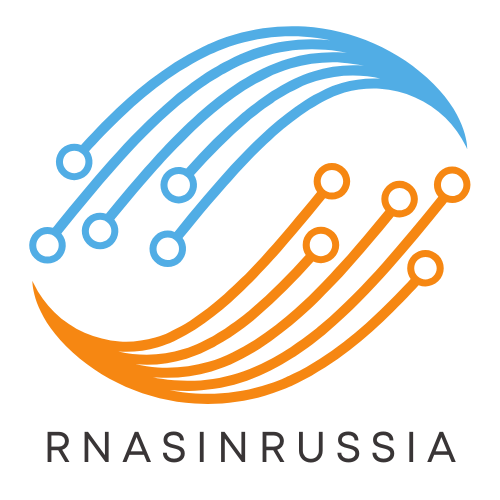Table of Contents
ToggleIn a world where technology evolves at lightning speed, robotics programming stands at the forefront of innovation. This dynamic field combines engineering and computer science to create intelligent machines capable of performing complex tasks. From manufacturing to healthcare, robotics is transforming industries and reshaping how we live and work.
As robots become more integrated into daily life, mastering robotics programming is essential for aspiring developers and engineers. It opens doors to a realm of possibilities, enabling them to design, build, and program robots that can assist, entertain, and even save lives. Understanding the fundamentals of robotics programming not only enhances technical skills but also fuels creativity and problem-solving abilities in a rapidly changing landscape.
Overview of Robotics Programming
Robotics programming involves designing, coding, and developing software for controlling robots. This field combines principles of engineering, computer science, and mathematics to create intelligent machines capable of executing various tasks autonomously or collaboratively.
Robots rely on programming languages tailored for their specific platforms. Common languages include:
- C/C++: These languages provide control over system hardware and real-time processing.
- Python: Known for simplicity and versatility, Python supports rapid development and is widely used in robotics frameworks like ROS (Robot Operating System).
- Java: This object-oriented language is often used for mobile robotics due to its portability.
Developers engage with numerous tools and environments, enhancing the efficiency of the programming process. These include:
- Simulation software: This allows for virtual testing of robotic models, minimizing risks before implementing real-world solutions.
- Integrated Development Environments (IDEs): These environments, such as Visual Studio and Eclipse, facilitate coding, debugging, and project management.
Robotics programming encompasses various applications across industries. Examples include:
- Manufacturing: Automated robots perform repetitive tasks, improving productivity and precision.
- Healthcare: Surgical robots assist physicians in complex procedures, enhancing accuracy and reducing recovery times.
- Agriculture: Drones and robotic systems optimize resource management, leading to higher efficiency in crop production.
Mastering robotics programming equips individuals with essential skills in problem-solving, creativity, and technical proficiency. As technology progresses, staying adept in this field remains crucial for aspiring engineers and developers.
Key Programming Languages Used in Robotics

Robotics programming relies on several languages that facilitate robot control and software development. The most prominent programming languages in this field include C++, Python, and Java, each offering unique advantages.
C++
C++ remains a popular choice in robotics due to its performance efficiency and control over hardware. C++ allows developers to optimize code for real-time applications, making it essential for robotic systems that require quick responses. With a rich set of libraries and frameworks, such as the Robot Operating System (ROS), C++ provides tools for motion planning and sensor integration, essential for building sophisticated robotic applications.
Python
Python’s simplicity and readability make it a favored language among robotics developers. Python accelerates development speed, allowing for rapid prototyping and testing of algorithms. Libraries like NumPy and OpenCV enhance capabilities in data manipulation and computer vision, respectively. Its extensive community support adds to its strength, providing access to numerous resources and frameworks that streamline the programming process in robotics.
Java
Java’s portability and scalability offer significant benefits in robotics programming. The language’s object-oriented design fosters modular code, facilitating easier maintenance and collaboration on large projects. Java’s integration with Android makes it particularly useful for developing robotic applications that require mobile control. With robust libraries such as JS robotics and Processing, Java supports diverse functionalities, expanding its use in the robotics domain.
Core Concepts in Robotics Programming
Robotics programming encompasses several essential concepts that drive the functionality and intelligence of robotic systems. Understanding these core components is crucial for anyone involved in designing and implementing robotic solutions.
Control Systems
Control systems manage a robot’s movements and actions, ensuring accurate performance in various environments. Systems can be classified into two types: open-loop and closed-loop. Open-loop systems operate without feedback mechanisms, relying solely on pre-set commands, while closed-loop systems utilize sensors to gather real-time data, allowing for adjustments based on environmental changes. Developers often implement proportional-integral-derivative (PID) controllers to maintain stability and precision in controlling robotic actions. Effective control systems are fundamental in applications like robotic arms, drones, and autonomous vehicles, where precise movements are critical.
Algorithms and Artificial Intelligence
Algorithms define the step-by-step procedures that robots follow to solve tasks efficiently. Robotics heavily incorporates artificial intelligence (AI) techniques, enabling machines to learn and adapt from experiences. Advanced algorithms, such as machine learning and computer vision, enhance a robot’s ability to process information and improve decision-making. Pathfinding algorithms, like A* and Dijkstra’s, facilitate optimal navigation in complex environments, while deep learning frameworks allow robots to recognize patterns in visual data. The integration of AI not only increases autonomy but also empowers robots to perform intricate functions like natural language processing and image recognition, making them more versatile across industries.
Popular Robotics Programming Frameworks
Several frameworks streamline the robotics programming process, enabling developers to build and deploy robotic systems efficiently. Two prominent frameworks in this domain include ROS and VEXcode.
ROS (Robot Operating System)
ROS is a flexible framework designed for robotic software development. Its modular architecture allows developers to create and share reusable code components, significantly enhancing collaboration within the robotics community. ROS supports various programming languages, primarily Python and C++, catering to different project requirements. It provides essential tools like libraries for sensor integration, simulation environments like Gazebo, and message-passing systems for communication between components. ROS enables developers to build complex robotic applications, making it a standard choice for both academia and industry.
VEXcode
VEXcode offers a user-friendly environment tailored for robotics education and competition. It provides a straightforward programming interface, allowing users to program VEX robots using block-based coding or text-based languages like C++. VEXcode emphasizes accessibility, making it ideal for beginners in robotics programming. The software includes debugging tools, simulation features, and extensive documentation that support effective learning and development. VEXcode’s ease of use and comprehensive resources make it an excellent choice for schools and robotics enthusiasts alike.
Real-World Applications of Robotics Programming
Robotics programming finds extensive applications across various industries, significantly transforming processes and enhancing efficiency. Two notable areas include industrial automation and healthcare.
Industrial Automation
Robotics programming plays a crucial role in industrial automation by streamlining manufacturing processes. Automated robots perform tasks such as assembly, welding, and material handling with high precision and speed. For instance, in automotive production lines, robotic arms execute repetitive tasks, reducing human error and increasing throughput.
Robots equipped with advanced programming can adapt to changes in production demands. They utilize machine learning algorithms to optimize workflows, analyze data, and predict maintenance needs, resulting in minimized downtime. According to a report by McKinsey, the deployment of robotics in manufacturing can boost productivity by up to 30%, showcasing the impact of robotics programming on operational efficiency.
Robotics in Healthcare
Robotics programming revolutionizes healthcare by enabling the development of sophisticated surgical robots and assistive devices. Surgical robots, such as the da Vinci Surgical System, provide surgeons with enhanced precision during minimally invasive procedures. These robots leverage advanced algorithms and real-time imaging to assist in complex surgeries, improving patient outcomes and reducing recovery times.
Additionally, rehabilitation robots support physical therapy by aiding patients in regaining mobility. Programming these robots involves integrating sensors and adaptive algorithms to tailor exercises based on individual patient needs. A study published in the journal Science Robotics demonstrated that patients using robotic-assisted therapy showed faster recovery compared to traditional methods, highlighting the importance of robotics programming in healthcare innovation.
Future Trends in Robotics Programming
Future trends in robotics programming reflect the rapid advancements in technology and growing demand for automation. Developers and engineers adapt to these trends to remain competitive and innovative.
Increased Use of Artificial Intelligence
AI integration continues to reshape robotics programming. As AI algorithms improve, robots gain enhanced decision-making capabilities and adaptability. Machine learning applications allow robots to analyze data patterns, leading to improved performance in complex tasks across industries.
Collaborative Robots (Cobots)
Cobots are designed to work alongside humans, promoting efficiency and safety in work environments. Robotics programming increasingly focuses on developing algorithms that enable seamless interaction between robots and humans. This trend enhances productivity while allowing for cooperative task management.
Enhanced Simulation Tools
Simulation software evolves to facilitate the testing and development of robots in virtual environments. Advanced simulation tools enable developers to create and refine robotic behaviors before deploying them in real-world scenarios. This trend minimizes risk and accelerates the development process.
Edge Computing in Robotics
Edge computing reduces latency by processing data closer to the source. Robotics programming increasingly leverages edge computing to enhance real-time processing capabilities in robots. This method ensures faster response times and improved performance in time-sensitive applications.
Open-Source Robotics Frameworks
Open-source frameworks gain prominence, fostering collaboration among developers. Projects like ROS and OpenRTM provide resources that allow programmers to share code and improvements. This trend accelerates the development of innovative robotics applications and lowers entry barriers for new developers.
Focus on Cybersecurity
As robotics systems become more interconnected, cybersecurity becomes a critical concern. Robotics programming must address potential vulnerabilities through secure coding practices and robust security measures. This trend ensures that robotic systems remain safe against cyber threats and unauthorized access.
Advancements in Human-Robot Interaction
Human-robot interaction (HRI) is receiving increased attention in robotics programming. Enhanced interfaces and natural language processing improve communication between humans and robots. Developers focus on creating intuitive systems that allow seamless interactions and foster trust between users and robotic systems.
Sustainability and Green Robotics
Sustainability efforts drive the development of eco-friendly robotics applications. Programming focuses on creating energy-efficient robots and optimizing resource usage in manufacturing and logistics. This trend aligns with growing environmental concerns and promotes sustainability in robotics design and implementation.
These future trends in robotics programming indicate a transformative shift within the field. As technology advances, keeping pace with these developments becomes essential for future robotics professionals.
Robotics programming stands at the forefront of technological innovation. Its ability to merge engineering principles with advanced programming techniques is reshaping industries and enhancing everyday life. As robots become more integral in sectors like manufacturing and healthcare, the demand for skilled programmers continues to grow.
Mastering the key programming languages and frameworks is vital for anyone looking to excel in this field. With trends pointing toward increased automation and AI integration, the future of robotics programming is bright. Aspiring developers and engineers must stay informed and adaptable to thrive in this dynamic environment. Embracing these changes will not only enhance their careers but also contribute to the ongoing evolution of robotics in society.





